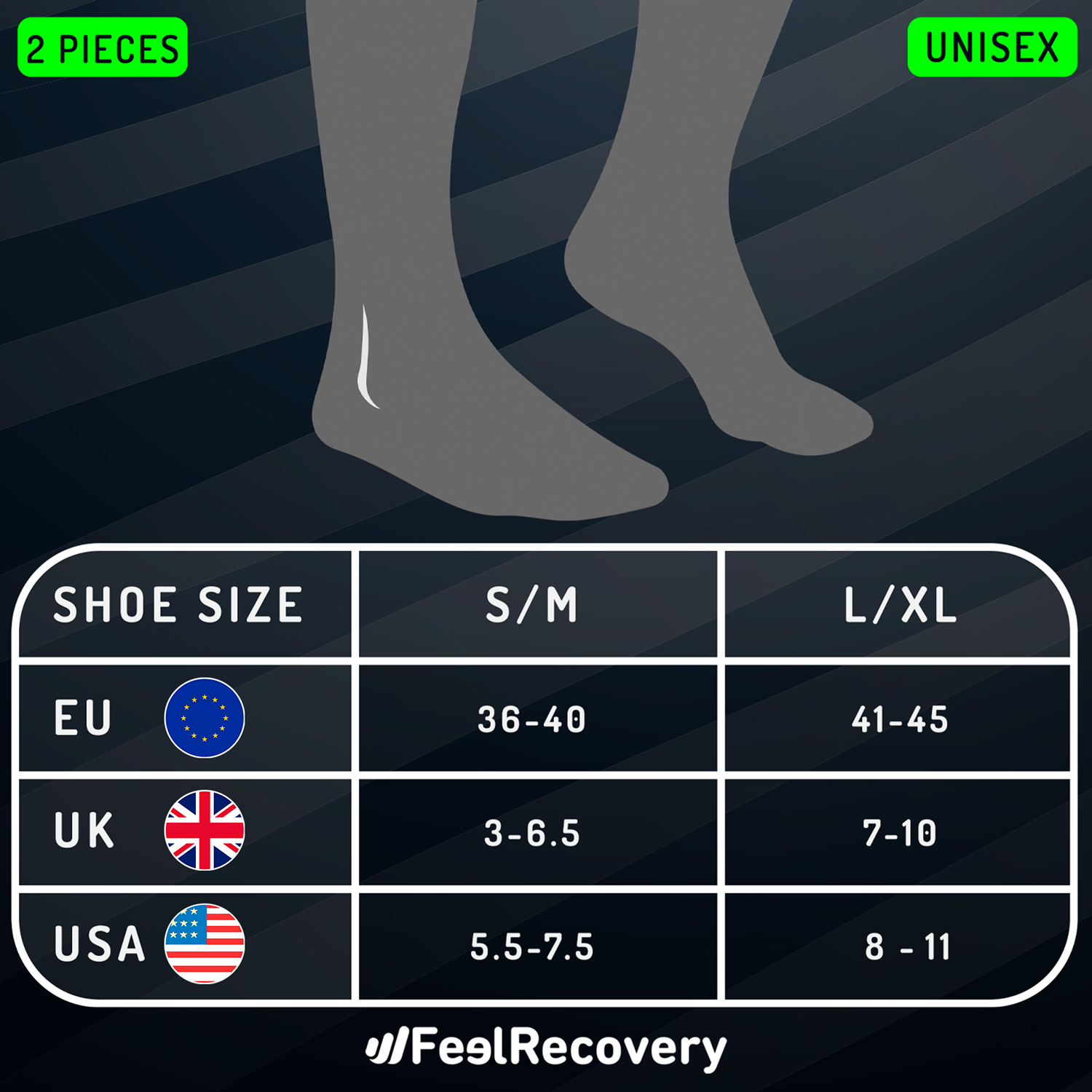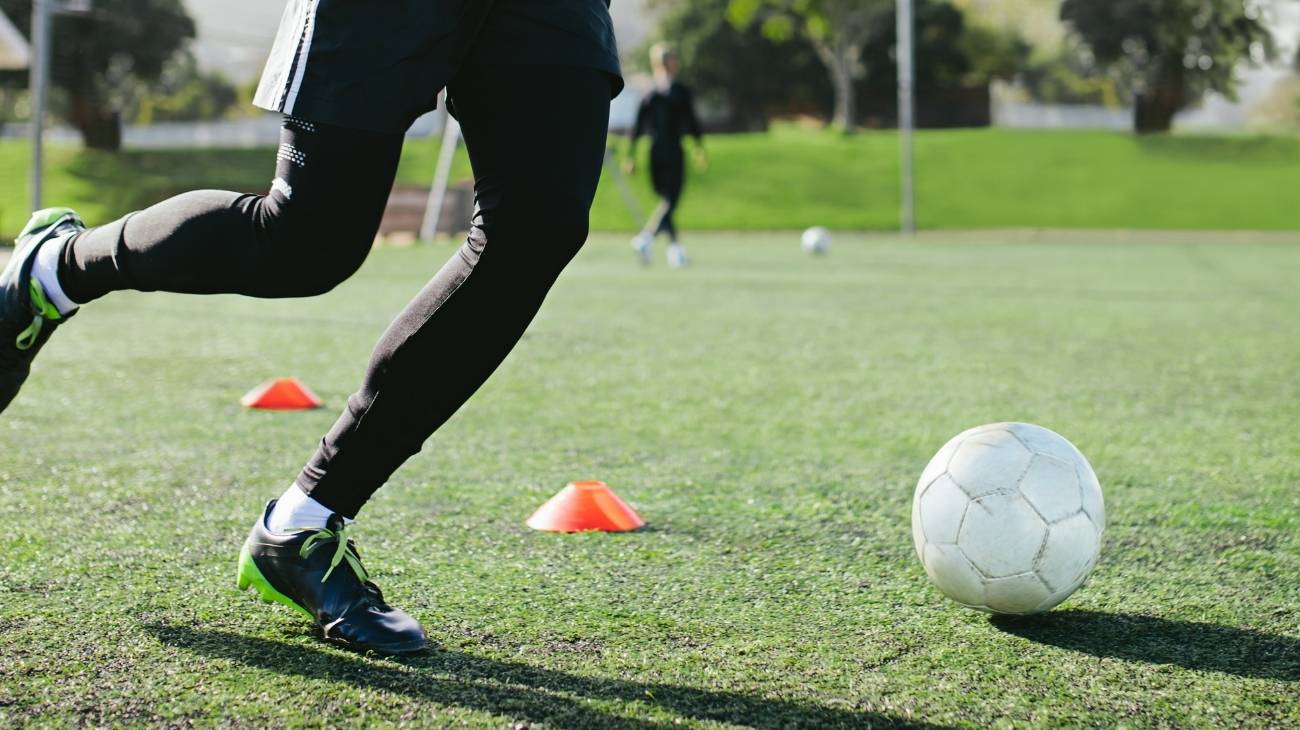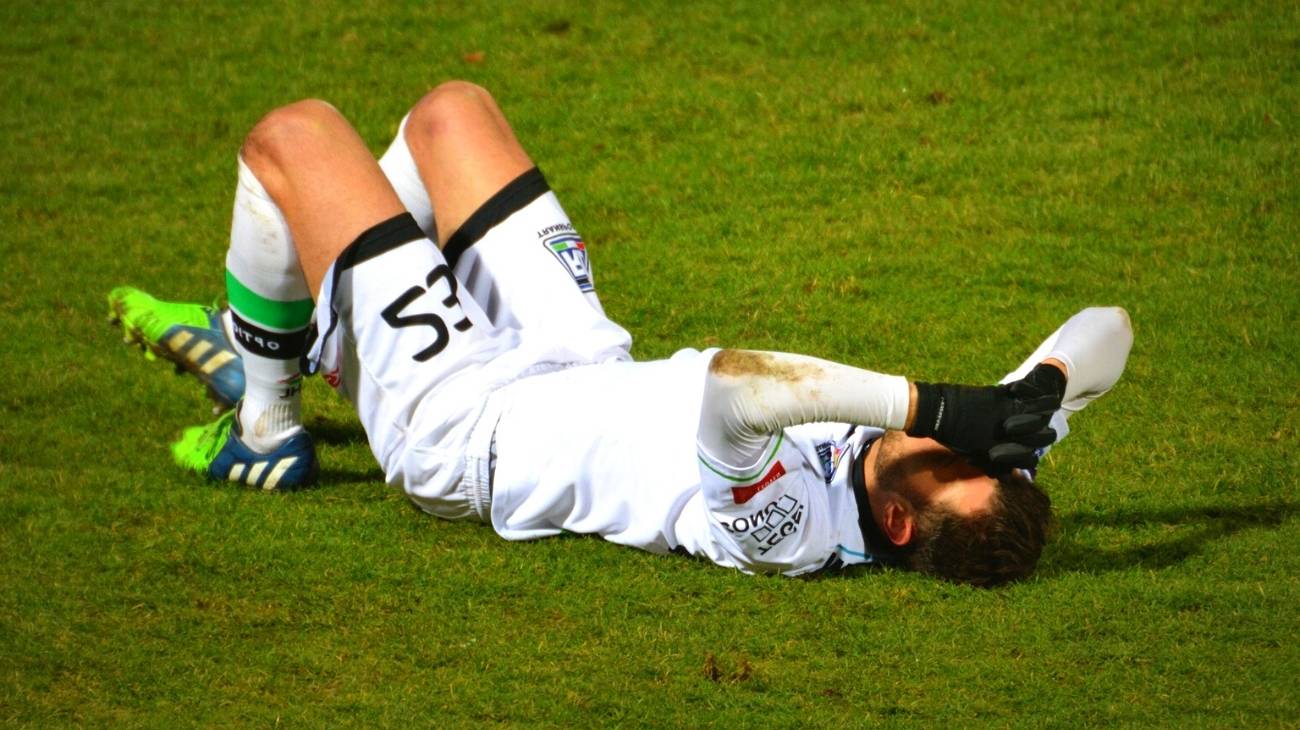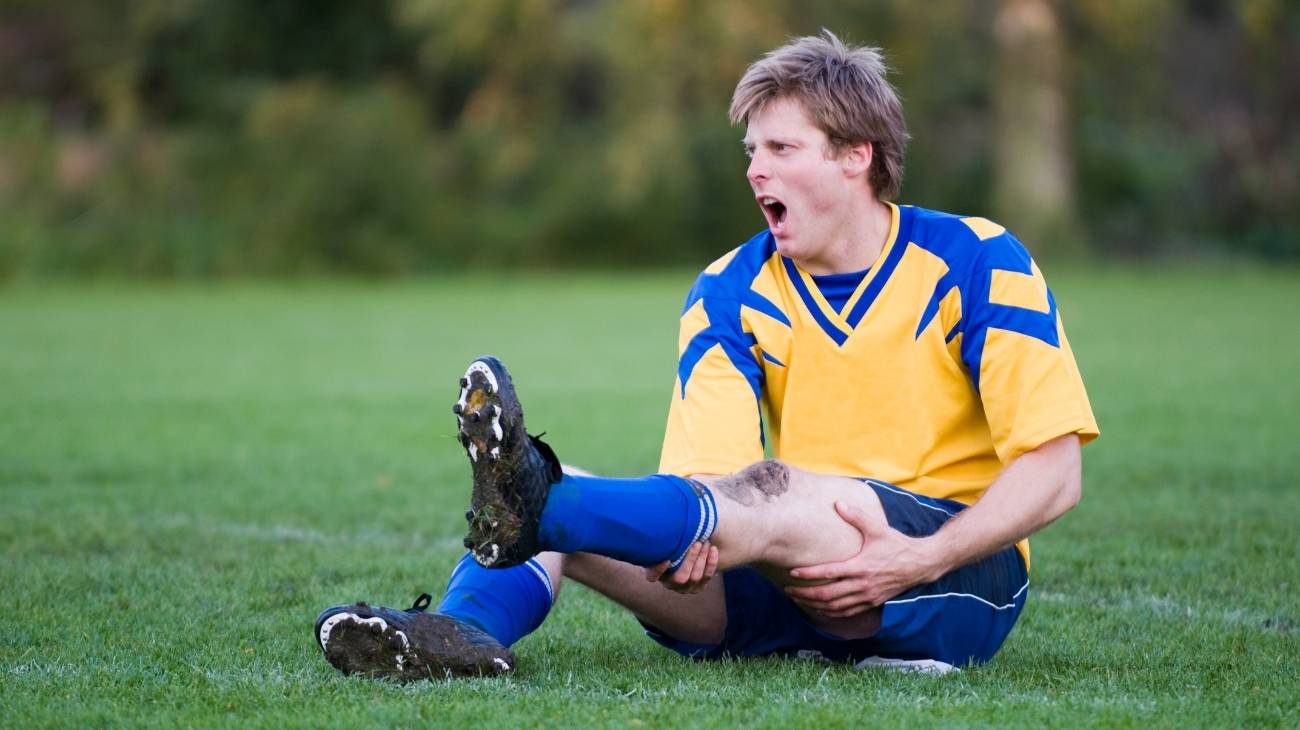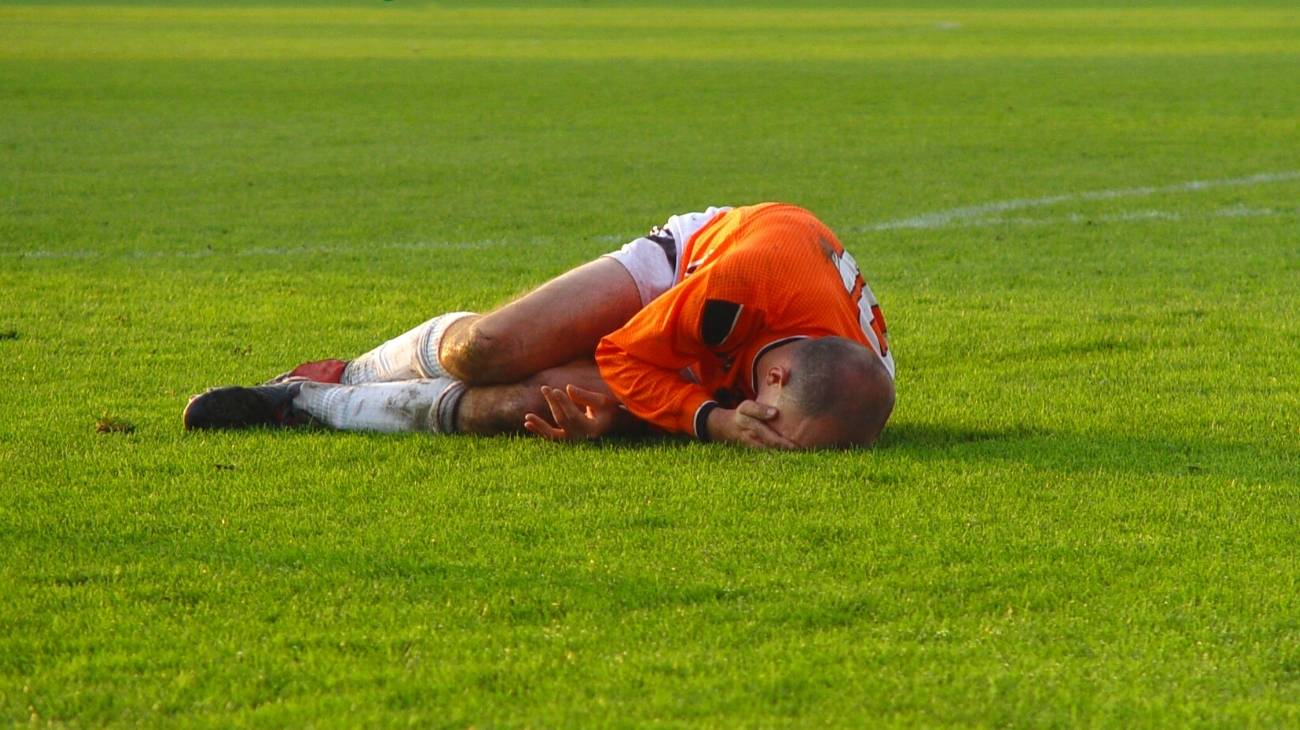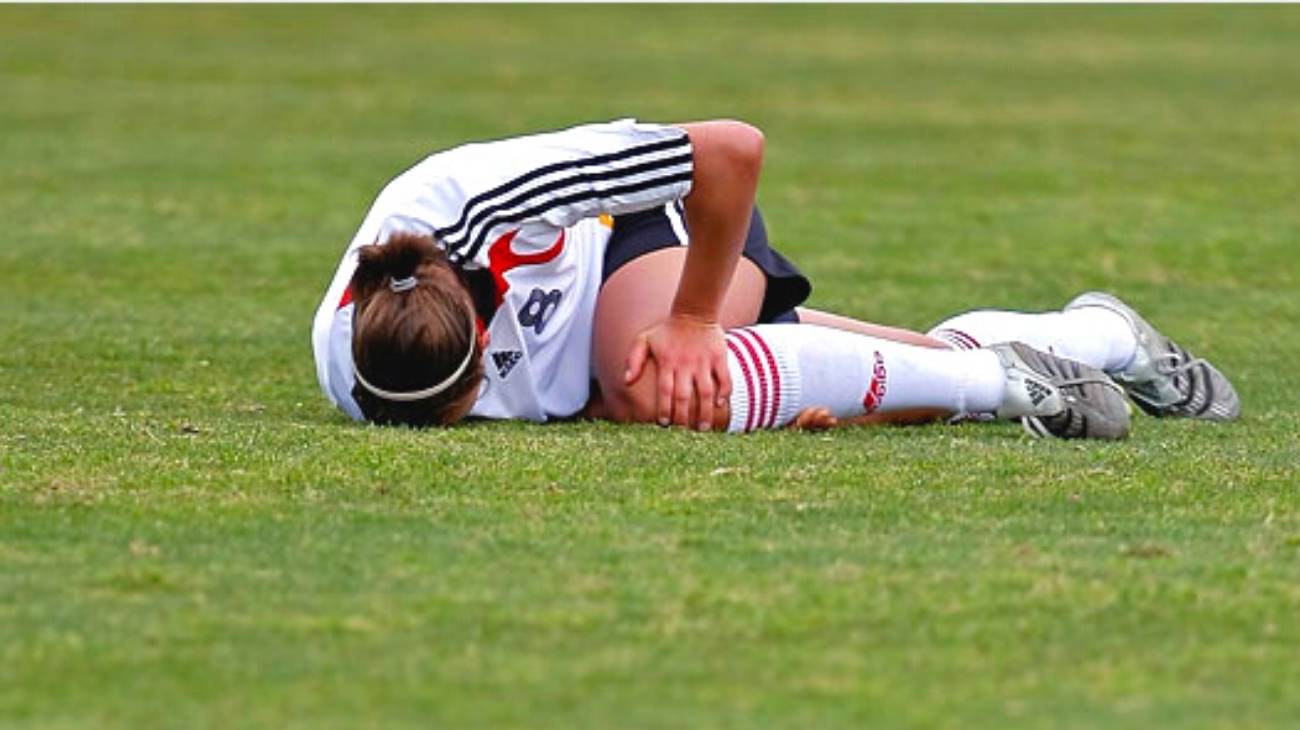In each match, a football player loses on average about a thousand calories, that's quite a lot of energy and it's a lot of wear and tear on your body that will eventually lead to muscle problems that require treatment to improve your fitness.
In just one match, a football player can run up to 15 kilometres, Did you know that? We show you which are the most common surgical treatments to cure serious and chronic injuries in football. You will also find out which are the most common ailments and how to apply the PRICE therapy.
What are the most common types of injuries when playing football?
Avoiding an injury in football is the task of both the player and the physical trainer, but when both are unable to overcome an ailment, it is important to know how to react in the first moments and what steps to take next to prevent a minor injury from becoming serious.
Check out this list of the most common football injuries and the root cause of each one:
- Broken phalanges in the feet: The fingers and toes are made up of phalanges, which are small bones that are very fragile and sensitive to shocks. There may be a phalangeal injury in the feet and the player may not realise it until he feels a strange discomfort that forces him to examine his fingers and toes. This injury is caused by hard kicks or poor kicking technique.
- Pubalgia: All the strain on the muscles, tendons, ligaments and joints in the hip ends up affecting the pubis in football players. When the tissues put pressure on this area, pubalgia occurs. It is summarised as inflammation of the pubic muscle attachments. And although it may seem mild, it is actually a nuisance because it prevents the player from running freely. It can be caused by a malfunction in the pubic area or by repeated blows and pressure, the most common case in football.
- Dislocations: As the ankles and knees take the full weight of the body in running, starting and stopping during a football match, they are the joints that come out of place the most. A blow can push the knee out of place or excessive flexion. The same with the ankles, wear and tear on the tendons increases the likelihood of dislocation, along with a twist from a bad step. The best thing to do is to check for arterial lesions that could complicate the situation.
- Plantar fasciitis: The pain in this injury is more concentrated in the heel area, although the tissue goes from the heel to the metatarsal area, just below the toes. It is the inflammation of this tissue, which is tough, but not strong enough to withstand constant falls and bad footfalls from players going at speeds of more than 30 km/h during a match. To give you an idea, outside the sports area this injury appears in people over 45 years of age and older, but in football players it occurs at any age due to the intensity of the sport.
- Adductor tendonitis: This is a hip injury, one of the possible causes of pubalgia when it is not addressed in time. It occurs when there is mild damage to the tissues of the muscle group that make up the adductors. These bring the leg back to the centre of the body. A football player runs about 15 kilometres every match, so there is significant wear and tear on both the adductors and abductors.
- Calf and hamstring injuries: The only way to prevent these injuries is to warm up properly before training and matches. Both muscles help to give players more power when running, so special care must be taken not to strain these parts of the leg too much. A calf and hamstring tear is the worst thing an athlete can suffer as it will keep them out of a match and possibly out of competition for several weeks.
Best products for football injury recovery
Bestseller
-
2 Ankle Compression Sleeve (Black/Gray)
£20,95 -
2 Ankle Compression Sleeve (Green/Navy)
£20,95 -
2 Ankle Compression Sleeve (Pink/Bordeaux)
£20,95 -
2 Calf Compression Sleeve (Black/Gray)
£20,95 -
2 Calf Compression Sleeve (Green/Navy)
£20,95 -
2 Calf Compression Sleeve (Pink/Bordeaux)
£20,95 -
2 Knee Compression Sleeve (Black/Gray)
£20,95 -
2 Knee Compression Sleeve (Green/Navy)
£20,95 -
2 Knee Compression Sleeve (Pink/Bordeaux)
£20,95 -
2 Thigh Compression Sleeve (Black/Gray)
£20,95 -
2 Thigh Compression Sleeve (Green/Navy)
£20,95 -
2 Thigh Compression Sleeve (Pink/Bordeaux)
£20,95 -
Ice Pack for Foot - Cold Therapy Socks (Black)
£20,95 -
Ice Pack for Foot - Cold Therapy Socks (Green)
£20,95 -
Ice Pack for Foot - Cold Therapy Socks (Pink)
£20,95 -
Microwavable Heated Slippers (Hearts)
£24,95 -
Microwavable Heated Slippers (Oxford)
£24,95 -
Microwavable Heated Slippers (Sport)
£24,95
-
2 Patella Knee Strap (Black/Gray)
£12,95 -
2 Patella Knee Strap (Green/Navy)
£12,95 -
2 Patella Knee Strap (Pink/Bordeaux)
£12,95 -
Foot Massage Roller for Plantar Fasciitis (Black)
£20,95 -
Foot Massage Roller for Plantar Fasciitis (Green)
£20,95 -
Foot Massage Roller for Plantar Fasciitis (Pink)
£20,95 -
Ice Massage Roller Ball (Black)
£34,95 -
Ice Massage Roller Ball (Green)
£34,95 -
Ice Massage Roller Ball (Pink)
£34,95 -
Sacroiliac Support Belt (Black)
£24,95 -
Sacroiliac Support Belt (Green)
£24,95 -
Sacroiliac Support Belt (Pink)
£24,95 -
Soft Density Foam Roller for Recovery (Black)
£34,95 -
Soft Density Foam Roller for Recovery (Green)
£34,95 -
Soft Density Foam Roller for Recovery (Pink)
£34,95 -
Sport Compression Socks (1 Pair) (Black/Gray)
£20,95 -
Sport Compression Socks (1 Pair) (Green/Navy)
£20,95 -
Sport Compression Socks (1 Pair) (Pink/Bordeaux)
£20,95
How to apply the RICE therapy to treat first aid injuries in football?
Lowering the likelihood of tissue complications is the main purpose of the RICE therapy, a set of steps to be followed as first aid. RICE therapy started to be used in sports medicine in the late 1970s, since then it received an update to the PRICE therapy.
- Protection: The first step should always be to protect the injured area, whether it is the knee, ankle or any other joint, a bandage should be applied and even a splint should be applied to prevent it from receiving a new blow that could aggravate the injury.
- Rest: The second is to stop moving the limb or area of the injury, as not knowing the extent of the injury could aggravate it and generate new complications that lengthen the recovery time.
- Ice: In primary care, you only need ice covered with a handkerchief or a thermal bag that allows it to be applied to the skin. Remember that leaving it on for more than 20 minutes will only aggravate the injury, there should always be a 10-minute break. Ice initiates an analgesic, anti-inflammatory and pain control effect.
- Compression: Every good football player should have compression ankle and knee braces, these compressive garments are great for controlling swelling and maintaining a good body temperature in the injury. Ultimately, the aim is to lower the players pain threshold and exert light pressure to reduce blood flow.
- Elevation: Let's make gravity an important ally in injury care. As the ailments are usually in the legs, the player should be lying down and face up, and then elevate the leg above the level of the heart on a pad to lower the blood flow. The elevation, combined with compression and ice, will keep the swelling and pain down.
Remember that the PRICE method is only recommended for minor injuries and soft tissue injuries. Under no circumstances should it be used for extremely severe sprains or bone fractures.
Surgical treatments for severe or chronic injuries in football players
Why should we avoid a sports injury? Because when a muscle, ligament or tendon is completely ruptured, it can be reconstructed, but it remains sensitive to possible recurrence.
Check out this list of the most effective invasive treatments for each football injury:
Hip injuries
The hip is used more than you might think in football because it is the secret to good dribbling. Every dribbler lives and dies by his hip and will not hesitate to go to the operating theatre to get his secret weapon back.
- Tenotomy for pubalgia: This is performed on any of the tendons that can cause excessive compression in the pubis. To do it safely, it requires local anaesthesia and in an operating theatre, after which the athlete must undergo gradual rehabilitation with physiotherapy.
- Surgery for abductors: Hip surgery should be avoided at all costs, and recovery therapy options should first be exhausted before going to the operating theatre. If the therapies are not favourable, open surgery is performed in which the affected abductor tendons are repaired. This is followed by physiotherapy.
Leg injuries
The legs are the ones that bear all the stress of the bumps and bruises caused by opponents, so it is normal that many of the ailments in them require surgery.
- Repair of muscle tears: The rupture of the fibres in the muscles must be total to go to simple surgery with anaesthesia that can be local or general as indicated by the doctor. The surgery repairs the muscle by making incisions in its fibres and ligaments to reattach them. It also requires physiotherapy for recovery.
- Fracture repair: When the femur is broken, an Open Reduction and Internal Fixation (ORIF) is used to put the broken bones back together. After learning to walk with crutches, gradually begin gentle recovery exercises and wait a long time until you are fully rehabilitated.
Knee injuries
Knees can destroy the career of any football player, so doctors do not hesitate to suggest surgery to solve any ailment in this joint.
- Dislocated knee repair: Knee arthroscopy can tighten and repair the kneecap, thus reducing the pain and allowing the player to slowly recover. Physiotherapy techniques should always be used first, although such an operation is not a major risk.
- Meniscus repair: This is also an arthroscopic procedure, which makes it a minimally invasive technique. The surgeon may opt for a partial meniscectomy, in which part of the meniscus is removed, or meniscal suturing if it is possible to avoid removal by making the incision.
- Anterior cruciate ligament repair: one of the worst injuries for football players, requiring a recovery time of 3-6 months. The procedure itself is simple as the torn ligament is replaced by a graft which is then fixed by a surgical suture anchor to proceed to close the incision and wait for the surgery to fully heal before rehabilitation begins.
Calf and calf injuries
Calf and calf injuries rarely require surgery, but when conventional treatments fail, the need for surgery cannot be avoided.
- Suture of calf muscles: When these muscles are torn, open surgery is performed under general or local anaesthesia in which the doctor will suture the muscle to reattach it so that it can regenerate over time, a process that can take several weeks.
- Achilles tendon repair: This is the most commonly injured part of the calf in football and deserves the most care. A small cut is made behind the calf and then the broken fibres are reattached, followed by recovery with physiotherapy. Remember that although there is no risk in the surgery itself, the success of it will depend on rest and the care that you follow to the letter, as complications are postoperative, because this area is usually slow to heal and very sensitive to infections.
Ankle injuries
The ankles are possibly the most problematic joints for football players, but they are among the most necessary as they are where part of the power is concentrated during running.
- Lateral ligament repair: Broström surgery, an outpatient operation in which the damaged ligaments are reconstructed, is used for these injuries. The procedure ensures that the foot is realigned and the arch in the sole is restored. It is a procedure that will also require subsequent physiotherapy for rehabilitation.
- Surgery for ankle fracture: A sufficiently large incision is made to put the bone in place and fix it with any fixation instruments such as pins and titanium screws. The fifth metatarsal may also be affected in this injury, so this bone may also need to be treated.
Foot injuries
The feet are one of the football players weapons as they are used to initiate a kick and they are also part of the power that is given to the shots. Therefore, in the event of any foot injury, do not hesitate to undergo surgery if necessary.
- Surgery for plantar fasciitis: Plantar fascia release is performed when the tissue (fascia) does not respond positively to non-invasive treatment. A small incision is made in the heel of the foot to release the tension in the fascia fibres.
- Phalangeal repair: In most cases the bones (phalanges) can be put back in place without surgery. However, when they need to be put back together in the operating theatre, a small metal plate with screws is used to hold the bones together while they are re-soldered.
References
- Inklaar, H. (1994). Soccer injuries: I: incidence and severity. Sports medicine, 18, 55-73. https://link.springer.com/article/10.2165/00007256-199418010-00006
- Inklaar, H. (1994). Soccer Injuries: II: Aetiology and Prevention. Sports medicine, 18, 81-93. https://link.springer.com/article/10.2165/00007256-199418020-00002
- Ekstrand, J., & Gillquist, J. (1983). Soccer injuries and their mechanisms: a prospective study. Medicine and science in sports and exercise, 15(3), 267-270. https://europepmc.org/article/med/6621313
- Dvorak, J., & Junge, A. (2000). Football injuries and physical symptoms. The American journal of sports medicine, 28(5_suppl), 3-9. https://pubmed.ncbi.nlm.nih.gov/11032101/
- Faude, O., Rößler, R., & Junge, A. (2013). Football injuries in children and adolescent players: are there clues for prevention?. Sports medicine, 43, 819-837. https://link.springer.com/article/10.1007/s40279-013-0061-x
- Arnason, A., Sigurdsson, S. B., Gudmundsson, A., Holme, I., Engebretsen, L., & Bahr, R. (2004). Risk factors for injuries in football. The American journal of sports medicine, 32(1_suppl), 5-16. https://journals.sagepub.com/doi/abs/10.1177/0363546503258912
- Östenberg, A., & Roos, H. (2000). Injury risk factors in female European football. A prospective study of 123 players during one season. Scandinavian journal of medicine & science in sports, 10(5), 279-285. https://onlinelibrary.wiley.com/doi/abs/10.1034/j.1600-0838.2000.010005279.x
- Ekstrand, J., Hägglund, M., & Waldén, M. (2011). Epidemiology of muscle injuries in professional football (soccer). The American journal of sports medicine, 39(6), 1226-1232. https://journals.sagepub.com/doi/abs/10.1177/0363546510395879
- Hallén, A., & Ekstrand, J. (2014). Return to play following muscle injuries in professional footballers. Journal of sports sciences, 32(13), 1229-1236. https://www.tandfonline.com/doi/abs/10.1080/02640414.2014.905695
- Hespel, P., Maughan, R. J., & Greenhaff, P. L. (2006). Dietary supplements for football. Journal of Sports Sciences, 24(07), 749-761. https://www.tandfonline.com/doi/abs/10.1080/02640410500482974
































